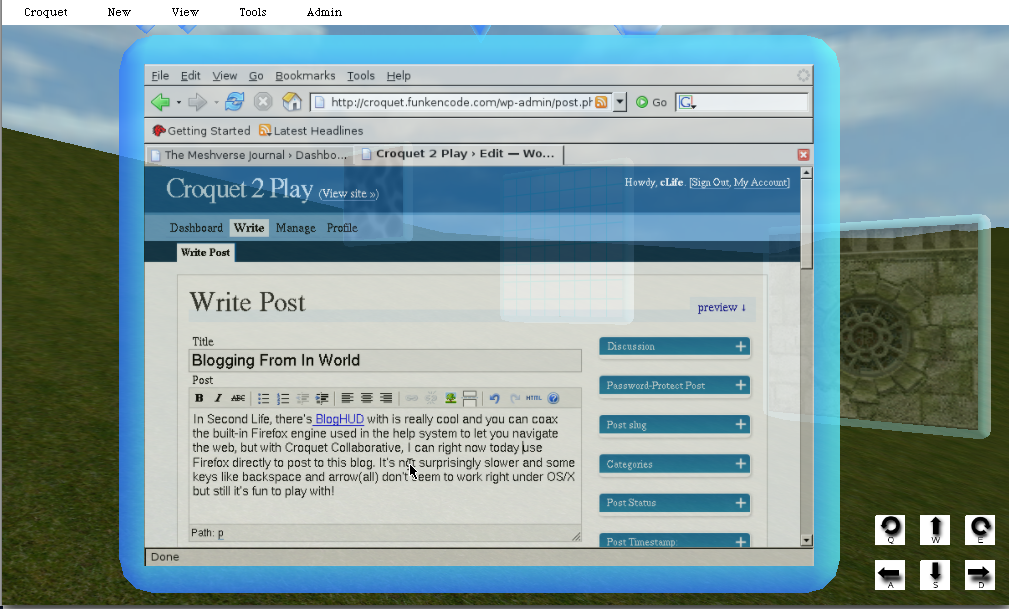Ever since Shelly’s “Frankenstein”, the distinguishing characteristic of science fiction (as opposed to fantasy and other literature) has been the postulation that beings can change the circumstances of the world in which they live. We can alter the human condition, for better or worse. An idea of the last few decades has been that we can create an alternative reality for ourselves that is better than the one we inhabit in the flesh. For example, the movie “Avatar” has the characters access an improved natural world through a virtualized experience.
This terrific short blog applies this idea wonderfully to learning and collaboration. “The real power of a virtual immersive environment is the ability to transport the learner or collaborators into an environment that is ideally suited for the learning or collaborating that needs to take place and this usually requires an altering of the spaces.”
In principle, we can abstractly virtualize such an experience with 2D photographs, or even 1D text, but that doesn’t tend to cross the threshold of immersion that is necessary for deep learning and deep collaboration. As this commenter on the above puts it, “In most 2-D meeting tools, the data is the center of focus, not the human. Think about a Web meeting. The leader is simply showing participants slides. But the participants are not interacting with the information, nor one another.” Simply reading about nature or viewing it from a helicopter was not enough for the characters in Avatar, they had to “be” there and interact with it.




